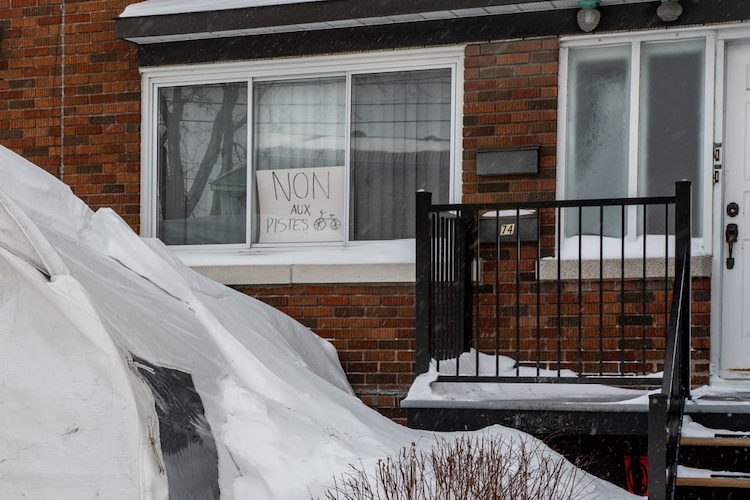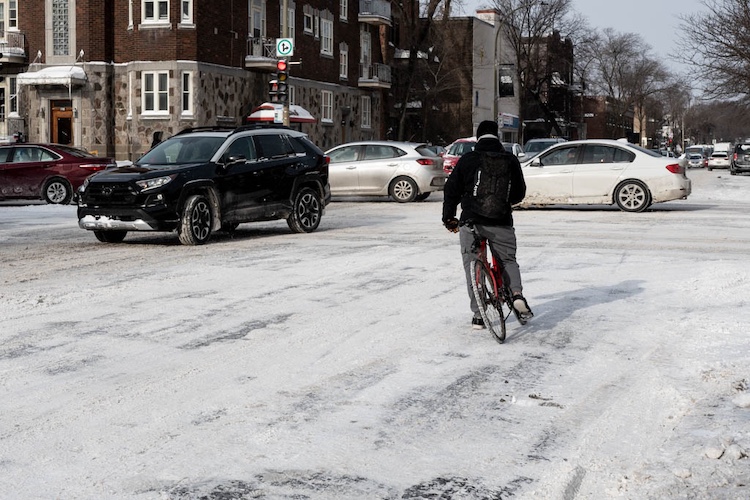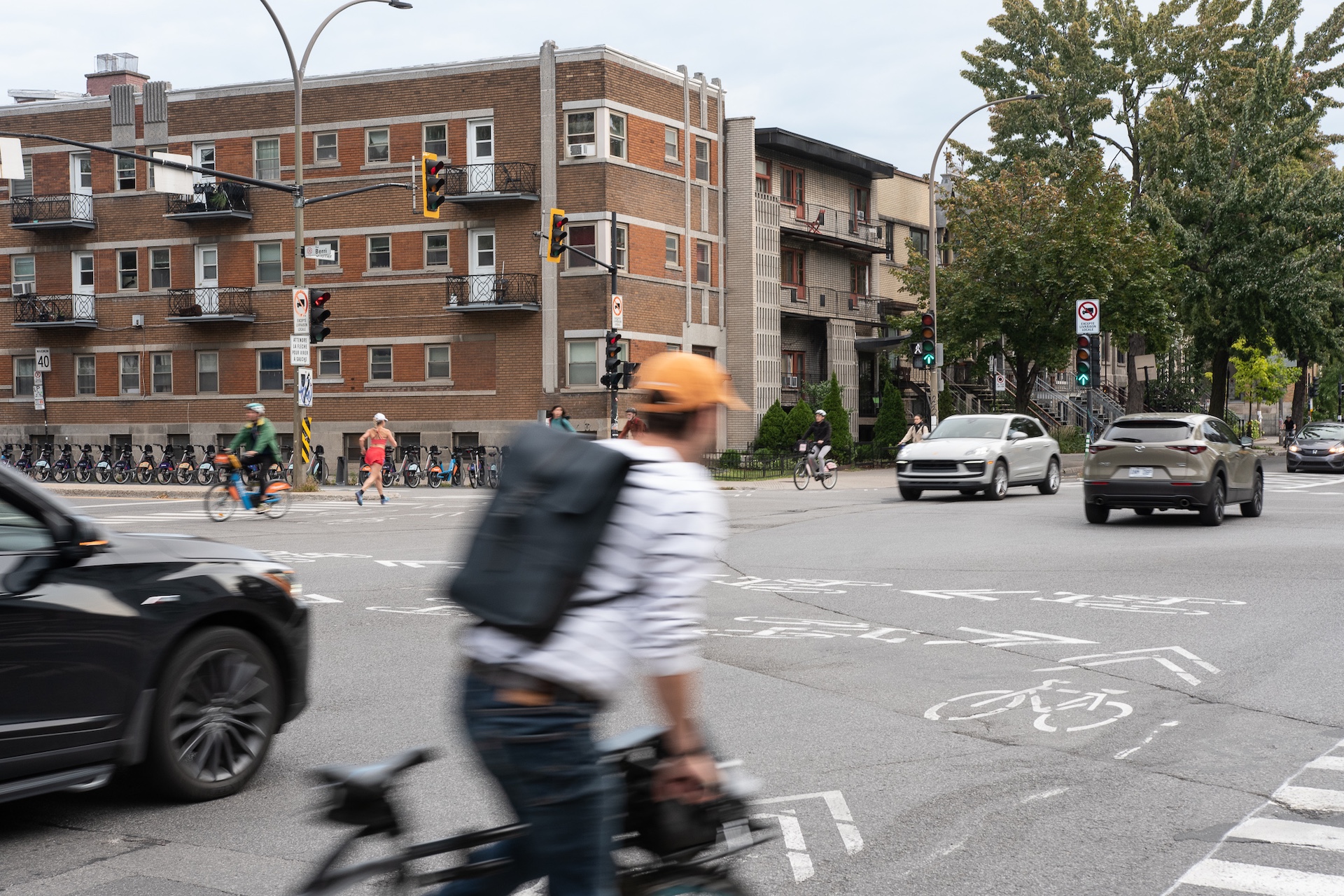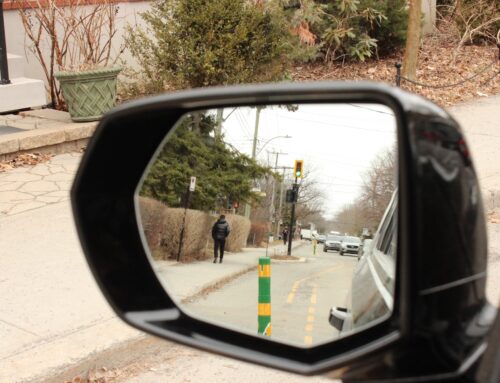BY David J-Beaudoin & Jeremy Cox
The term “Bikelash” has appeared in academia and the media in the last decade to describe the phenomenon of intense pushback against implementation of bike infrastructure.
“Essentially, it’s a contraction of bike lanes and backlash,” says Lancelot Rodrigue, researcher at Transportation Research at McGill (TRAM).
In Montreal, opposition to mayor Valérie Plante’s pro-cycling policies has been significant in some areas and brought the bike lane issue to the forefront of the municipal debate.
Rodrigue points out that the bike paths needed an upgrade when Plante came into office in 2017.
“Bike infrastructure had been neglected for a long time,” he says. “The main weakness at the time was the bad connectivity.”
It was difficult to cycle from point A to point B efficiently without having to go back through car traffic, defeating the purpose. The new administration aimed to quickly connect the many segments of bike lanes, but also to develop safe, wide and continuous paths that could cut right through the city efficiently.
Rodrigue points out that some new infrastructure projects weren’t seen as necessary by some.
“They might not have answered their needs,” he says.

The city’s latest bike infrastructure expansion of the Réseau Express Vélo network (REV) on the Henri-Bourassa boulevard in Ahuntsic-Cartierville. Photo by David J-Beaudoin.
Marc Perez is president of Coalition Démocratie Montreal. He is planning a lawsuit against the City of Montreal and represents people and shop owners from both Parc-Extension and Ahuntsic-Cartierville. They feel they haven’t been heard enough by the city and that bike infrastructure has been imposed on them, with the common denominator of lost parking spots.
Perez says the lawsuit is his last resort.
“Why do we let a minority do what the majority does not want?” he says. “They’ve won the elections, but they can’t only manage things for those who voted for them.”
He says residents who turn up to municipal consultation meetings face city officials who have already made up their mind about the projects. So the meetings are more about giving out information than actually consulting the public.
“It’s already done. That’s it,” he says.
But Julie Roy, a Projet Montréal city councilor in Ahuntsic-Cartierville believes the complaints don’t represent the majority of Montrealers.
“It’s a very vocal minority that has the belief that they represent everybody,” she says. “The more vulnerable do not come to meet their representatives.”
Roy says since more than a third of households in the central boroughs do not own a car, cycling safely is a priority for the city.
“It’s tough to make decisions for the common good without getting influenced by a minority of people,” she says.

Residents of Ahuntsic-Cartierville show their opposition to bike infrastructure and removal of parking spots on Legendre st. Photo by David J-Beaudoin.
Rodrigue says objections can arise if residents and motorists feel that they haven’t been informed or consulted properly about the project, and if it’s a net loss for motorists in the short term,
“They might be perceived as dogmatic political moves,” he says. “There’s a perception that the road is only for cars, so redistributing space for others is seen as unjust and harmful.” he also adds.
A map of recently contested new bike infrastructure in Montreal. Map by David J-Beaudoin.
In the case of Park Ex, Perez points out that local residents aren’t the prime beneficiaries of the bike lane.
“It facilitates moving around from other boroughs, but not for locals,” he says.
Roy agrees that the city has to do a better job of promoting bike infrastructure to locals.
“There is better work to be done to prove their benefits, such as appeased traffic and safer streets for pedestrians.”

A winter cyclist waits for the green light on Papineau avenue after the intense mid-February snowstorm. Photo by David J-Beaudoin.
One of the first of these large-scale projects, the St-Denis Réseau Express Vélo (REV), had initially been met with staunch opposition from shop owners. But five years later, many had changed their minds as the number of new cyclists passing by and the number of shops opening on the street both increased.
Rodrigue says bike paths have a good track record in commercial areas.
“It’s proven that the worst case scenario is that there’s no effect, and that the best case scenario means there’s a positive impact on businesses,” he says.
Rodrigue also points out the ‘virtuous cycle phenomenon’ that can be observed once safe infrastructure is installed.
“The more secure it is to cycle, the more cyclists there are, leading them to be more visible and so on,” he adds. This is consistent with the ARTM’s key findings in 2023 that reported a significant rise in active transportation in all of the greater Montreal area.
“We’re seeing the normalisation of biking in Montreal,” he says. And it’s a year-round phenomenon.
A look into winter biking in Montreal. Video by Jeremy Cox.
In the end ‘Bikelash’ may simply be the latest example of an old psychological phenomenon.
“Intergroup psychology is sort of the basis of how we think,” says Geneviève Mageau, a psychology professor at Université de Montreal. “There’s a pro endogroup bias, meaning us (the majority).”
Studies made in car-centric societies similar to ours, such as the United Kingdom and Australia, have shown that a considerable proportion of motorists categorize cyclists as an out-group, meaning not-us. Mageau says this can lead to problems.

A Bixi station that has been kept available this winter sits right next to Parc avenue and the bottom of the Mont-Royal. David J-Beaudoin.
“We’re less motivated to understand the reality of the other group, and generalize more,” she says.
Mageau adds there could be a simple solution to the problem of bikelash.
“Maybe empathy?” she says.




